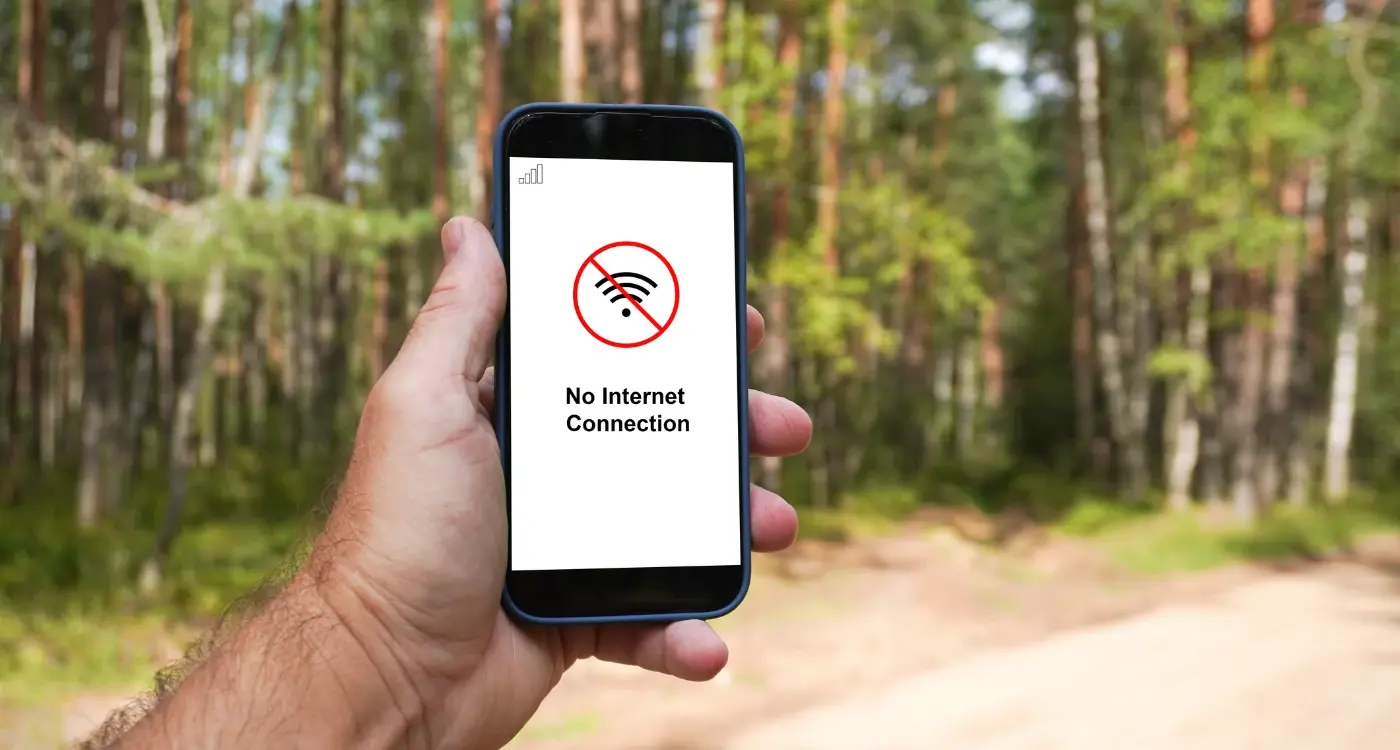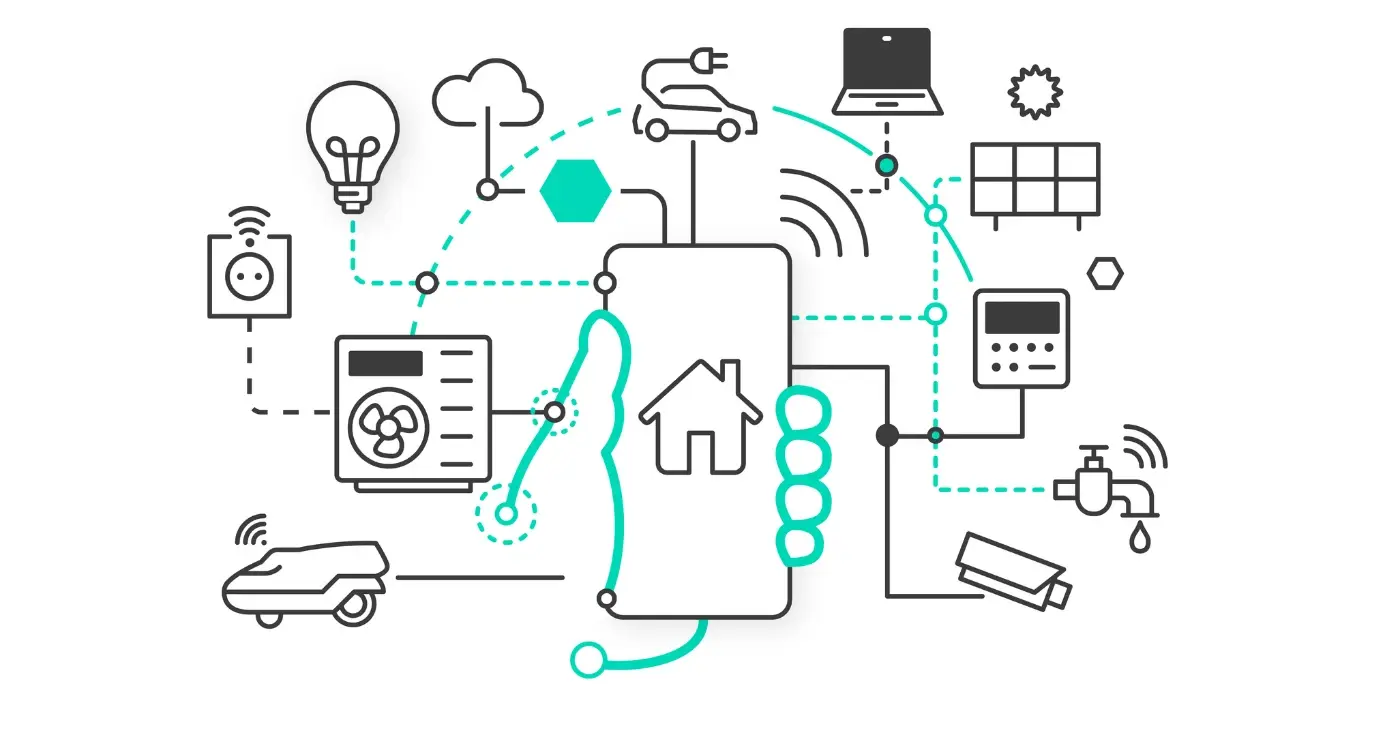Can My Enterprise App Work Offline?
What happens when your employees are out in the field, trying to use your business app, but the internet connection drops out? I've been building enterprise applications for years, and this scenario comes up more often than you might think. Your sales team is visiting a client in a basement office with terrible signal. Your field engineers are working in remote locations where connectivity is patchy at best. Your warehouse staff are dealing with thick concrete walls that block mobile signals.
The reality is that connectivity isn't guaranteed—even in our always-connected world. Your business app might work perfectly when everyone's sitting in the office with reliable Wi-Fi, but what about everywhere else? That's where offline functionality becomes absolutely critical for your enterprise success.
The best business apps are the ones that work regardless of whether you have an internet connection or not
Offline functionality means your app can continue working even when there's no internet connection available. Users can still access important data, complete tasks, and capture new information. When connectivity returns, everything syncs back up automatically. It's not just a nice-to-have feature anymore—it's become a necessity for any serious business app. Throughout this guide, we'll explore how offline capabilities work, when your business app needs them, and the different ways you can build them into your application. By the end, you'll understand exactly what's possible and what might work best for your specific business needs.
Understanding Offline Functionality
Right, let's get straight to the point. Offline functionality means your app can still work when there's no internet connection—no WiFi, no mobile data, nothing. Your users can still tap buttons, view content, and even create new information without being connected to the web.
Now, this doesn't mean your app becomes a magical standalone computer that can do everything. What it means is that your app stores some information on the device itself, so users can access that data even when they're disconnected. Think of it like having a copy of important documents in your filing cabinet at home—you don't need to ring the office to check what's in there.
What Actually Happens When Your App Goes Offline
When your app loses connection, it switches to using locally stored data. This might include user profiles, previously downloaded content, or work that someone started but hasn't finished yet. The app continues running, but it's working with information that's already on the phone or tablet.
Here's what offline functionality can include:
- Reading previously downloaded content like articles or product catalogues
- Filling out forms and surveys that save when connection returns
- Taking photos and adding notes that upload later
- Viewing maps and directions that were cached earlier
- Playing games or using tools that don't need real-time data
The Reality Check
Not everything can work offline—and that's completely normal. Your app can't send emails, update live social media feeds, or process payments without a connection. But the clever bit is deciding which parts of your app should work offline based on what your users actually need when they're disconnected.
When Your Business App Needs to Work Without Internet
Working out whether your business app needs offline functionality isn't always straightforward. I've built apps for all sorts of companies—retail chains, construction firms, healthcare providers—and the need for connectivity varies massively depending on what your app actually does and where people use it.
Let's start with the obvious ones. If your app handles critical business operations like inventory management, field service reports, or employee timesheets, offline capability becomes pretty much non-negotiable. Your staff can't stop working just because the WiFi's playing up or they're in a mobile dead zone. The same goes for apps used in remote locations—think construction sites, rural areas, or underground facilities where reliable internet is about as common as a unicorn.
When Offline Makes Business Sense
Sales teams are a perfect example of users who need offline access. They're constantly moving between client meetings, travelling on trains, or working from coffee shops with dodgy internet. If your CRM app can't function offline, you're asking them to explain to clients why they can't access basic information—not a great look professionally.
Ask yourself this simple question: would your business operations grind to a halt if the internet went down for two hours? If the answer is yes, you need offline functionality.
Cost vs Benefit Reality Check
Building offline features isn't cheap or simple. You're looking at extra development time, more complex testing, and ongoing maintenance. But here's the thing—if poor connectivity is costing you sales, productivity, or customer satisfaction, that investment pays for itself pretty quickly. Understanding the development costs upfront helps you make informed decisions about whether offline functionality solves a real business problem or just sounds like a nice-to-have feature.
Types of Offline Features You Can Build
When I talk to business owners about offline functionality, they often think it's an all-or-nothing situation—either your entire app works offline or it doesn't. That's not how it works in practice. You can pick and choose which parts of your app need to function without an internet connection, and honestly, this selective approach usually makes more sense both technically and financially.
Data Viewing and Basic Navigation
The most straightforward offline feature is letting users view information they've already downloaded. Think about your sales team looking at customer details, product catalogues, or previous meeting notes whilst they're underground on the tube. Your app can store this information locally so it's always accessible. Basic navigation between screens and searching through cached data works brilliantly here—users can filter through client lists, browse product specs, or check their task schedules without any connection at all.
Data Collection and Form Filling
This is where offline functionality really shines for enterprise apps. Field workers can fill out inspection reports, sales staff can log client visits, and delivery drivers can update job statuses. The app stores all this information locally and uploads it once they're back online. You can even build in photo capture, signature collection, and GPS location tracking—all saved locally until the connection returns. It's particularly useful for industries like construction, healthcare, or field services where internet coverage can be patchy but work still needs to get done.
The key is identifying which features your team genuinely needs when they're disconnected, rather than trying to make everything work offline from the start.
How to Store Data When There's No Connection
When your business app loses its internet connection, it needs somewhere to keep all the data that users are creating. Think of it like having a backup plan—your app can't just stop working when the WiFi cuts out.
Local storage is where your app saves information directly on the user's device. There are several ways to do this, and each one works better for different types of data. For simple settings and preferences, you might use something called SharedPreferences on Android or UserDefaults on iOS. These are perfect for storing small bits of information like user settings or login status.
Choosing the Right Storage Method
For bigger chunks of data—like customer records, inventory lists, or form submissions—you'll need a local database. SQLite is the most common choice because it works on both Android and iOS devices. Choosing the right database setup is crucial for apps that work offline and handles complex data relationships really well.
The key to successful offline functionality is choosing storage that matches your data complexity and size requirements
What About Files and Images?
Sometimes your business app needs to store files, documents, or images when offline. The device's file system can handle this, but you need to be smart about storage space. Large files can quickly fill up someone's phone, which won't make you popular with users.
The trick is deciding what data your business app absolutely needs when offline and what can wait until connectivity returns. Not everything needs to be stored locally—just the bits that keep your app useful when the connection disappears. Cache the essentials and your offline functionality will work smoothly without hogging device storage.
Syncing Your App When Connection Returns
Right, so your users have been working away on your app without any internet connection—they've been adding data, making changes, and getting things done. Now they're back online and your app needs to sync everything up with your servers. This is where things can get a bit tricky if you haven't planned properly.
The first thing your app needs to do is detect when the connection comes back. Most platforms give you built-in ways to monitor network status, so you can trigger your sync process automatically. But here's the thing—you don't want to overwhelm your servers or your user's data plan by trying to upload everything at once.
Smart Syncing Strategies
A good sync system works in the background without bothering your users. It should prioritise the most important data first and handle conflicts gracefully. What happens if two people edited the same record whilst offline? Your app needs to decide which version wins or ask the user to resolve the conflict.
You'll want to sync in small batches—maybe 10 or 20 records at a time. This prevents timeouts and gives you better error handling. If one batch fails, you can retry just that bit rather than starting from scratch. Your users should be able to keep using the app whilst syncing happens in the background.
Handling Sync Failures
Sometimes syncing will fail—servers go down, connections drop out, or data gets corrupted. Your app needs to be robust enough to handle these situations. Queue up failed items and try again later. Show users what's synced and what's still waiting. Most importantly, never lose their offline work—that's the whole point of having offline functionality in the first place.
Common Challenges and How to Solve Them
Building offline functionality into your business app isn't always straightforward—there are quite a few bumps along the way that can catch you off guard. The most common problem I see is data conflicts. This happens when the same piece of information gets changed in two different places whilst the app is offline. For example, if two team members update the same customer record without connectivity, your app needs to decide which version is correct when it syncs back up.
Storage limits are another headache. Mobile devices don't have unlimited space, and your offline data can quickly eat up precious storage. The trick here is being selective about what you store locally; not everything needs to be available offline. Focus on the data your users actually need when they're disconnected.
Technical Hurdles You'll Face
Performance can take a hit when you're juggling offline storage and sync processes. Users expect your business app to run smoothly, but background syncing can slow things down. The solution is smart queuing—batch your sync operations and run them when the app isn't busy with other tasks.
Always test your offline features with a completely disconnected device, not just poor connectivity. The behaviour can be surprisingly different.
User Experience Problems
Users often don't understand when they're working offline versus online. Clear visual indicators are your best friend here—show connection status prominently and explain what's happening with their data. Nothing frustrates users more than uncertainty about whether their work is saved.
Security becomes trickier too when sensitive business data lives on devices. Encryption is non-negotiable, and you'll need policies for what happens to offline data when someone leaves the company or loses their phone.
Conclusion
Building an offline-capable enterprise app isn't just a nice-to-have feature anymore—it's become a business requirement for most companies. Your employees need to work regardless of whether they're in a signal dead zone, travelling between offices, or dealing with patchy internet connections that seem to cut out at the worst possible moments.
The good news? You now understand the key components that make offline functionality work. Local storage keeps your data safe when connections drop; sync strategies handle the tricky bit of merging changes when you're back online; and smart caching means your app stays fast and responsive even in challenging conditions.
But here's what I want you to remember most: not every feature needs to work offline, and that's perfectly fine. Start by identifying which parts of your app are mission-critical—the functions your team absolutely cannot do without. Build offline support for those first, then expand from there if needed.
The technical challenges we've covered—data conflicts, storage limitations, and sync complexity—might seem daunting at first glance. They're not insurmountable though. Every successful offline app has worked through these same issues; it's just part of the development process.
Your enterprise app can definitely work offline with the right planning and implementation. The question isn't whether it's possible—it's whether you're ready to give your team the reliability and flexibility they need to do their best work, wherever that work takes them.
Share this
Subscribe To Our Learning Centre
You May Also Like
These Related Guides

Should My Mobile App Work Without an Internet Connection?

Should My Agriculture App Work Offline in Remote Rural Areas?



